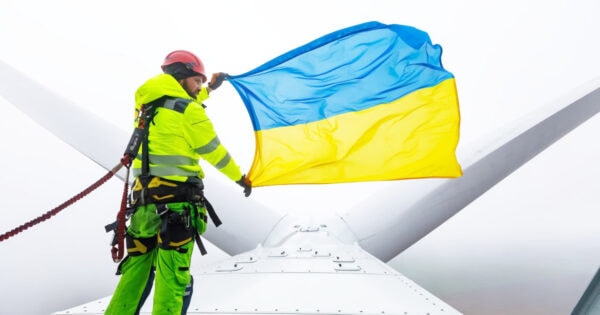Wind power is an extraordinary gift from nature, harnessed by humans over centuries. The essence of wind power lies in converting kinetic energy from the wind into mechanical power or more commonly into electricity, a process called wind energy conversion.
The story of wind power dates back to 5000 BC when the ancient Egyptians used wind to propel their boats along the Nile. Windmills, which have been used since 2000 BC, were the first wind-powered machines. However, the advent of electricity added a new chapter to the tale, leading us to the magnificent wind turbines we see today.
Understanding the distinction between wind power and wind energy is crucial. Wind power is the work done by wind energy, which originates from solar energy. The sun heats the Earth’s surface unevenly, creating areas of high and low pressure, which in turn, generate wind.
Table of Contents
Wind Turbine Components
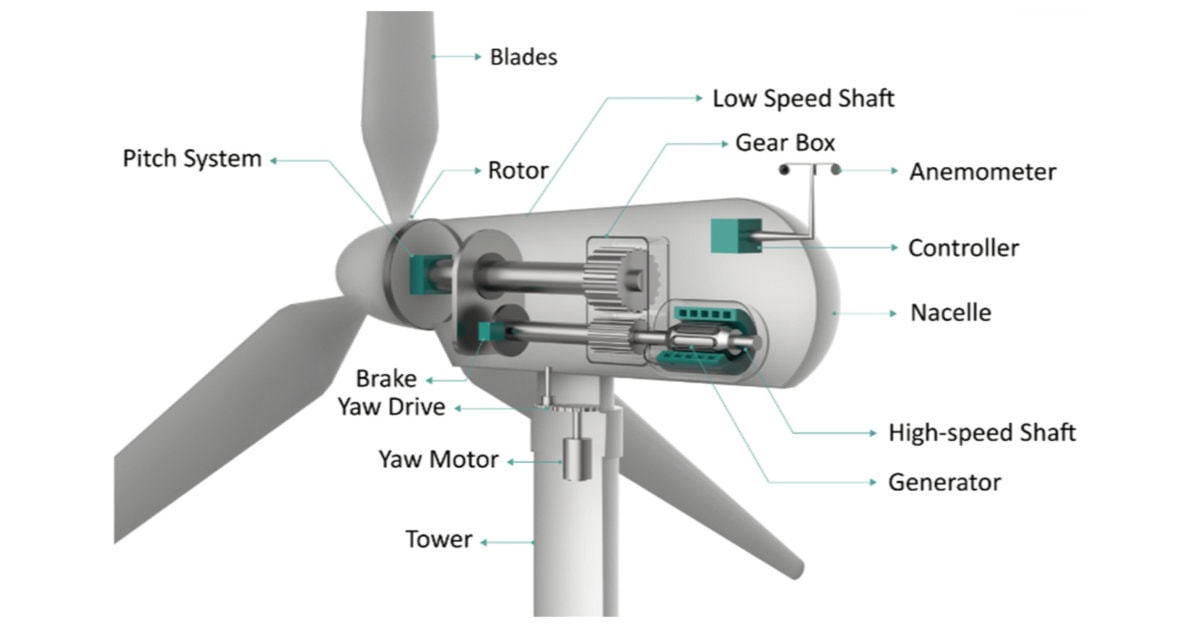
A typical wind turbine consists of a foundation, a tower, a nacelle (the box-like structure at the top of the tower), and the rotor, which consists of several blades.
Each component plays a crucial role. The rotor blades capture the wind’s energy. Inside the nacelle, the gearbox converts the slow rotation of the blades into a faster rotation suitable for the generator, which produces electricity. The tower supports the entire structure and elevates the rotor and nacelle to a height where the wind is stronger and less turbulent.
There are additional components, too. An anemometer measures wind speed, and the wind vane identifies the wind direction. The yaw mechanism ensures that the rotor faces into the wind to capture the most energy.
Types of Wind Turbines
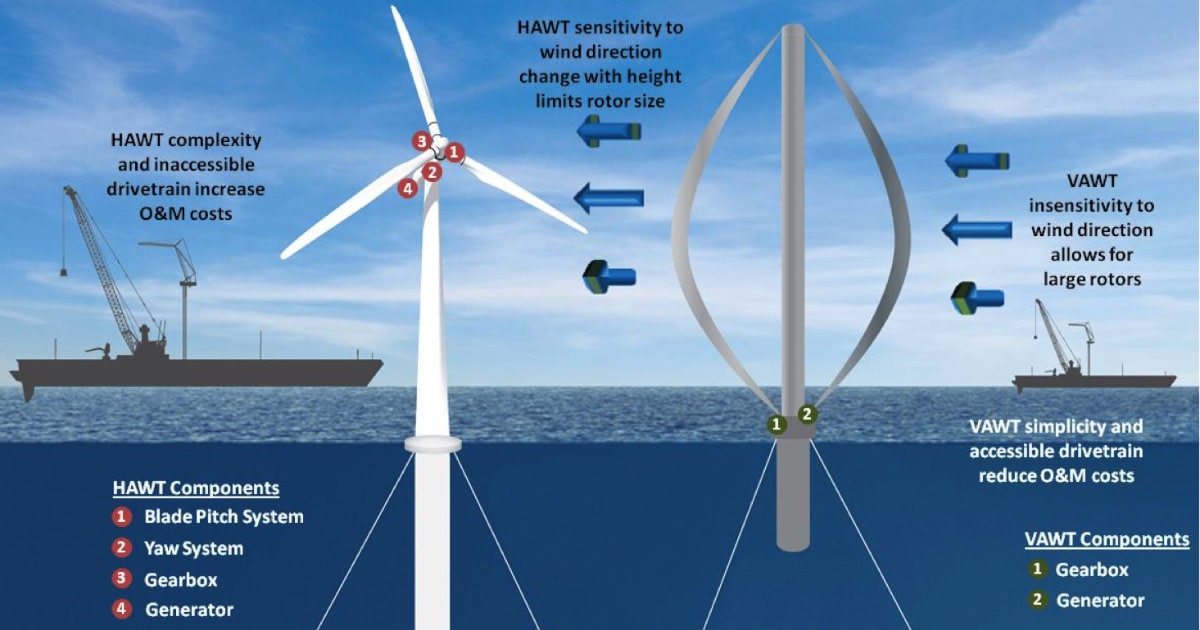
Two types of wind turbines dominate the wind energy landscape: horizontal-axis wind turbines (HAWTs) and vertical-axis wind turbines (VAWTs).
HAWTs, the most common type, have their main rotor shaft and generator at the top of a tower, and they must be pointed into the wind. The three-bladed turbines that you commonly see in wind farms are HAWTs.
On the other hand, VAWTs have their main rotor shaft arranged vertically and can accept wind from any direction. Examples of VAWTs include the Darrieus and Savonius turbines, though these are less common due to lower efficiency and challenges in mounting at high elevations.
Wind Power Generation
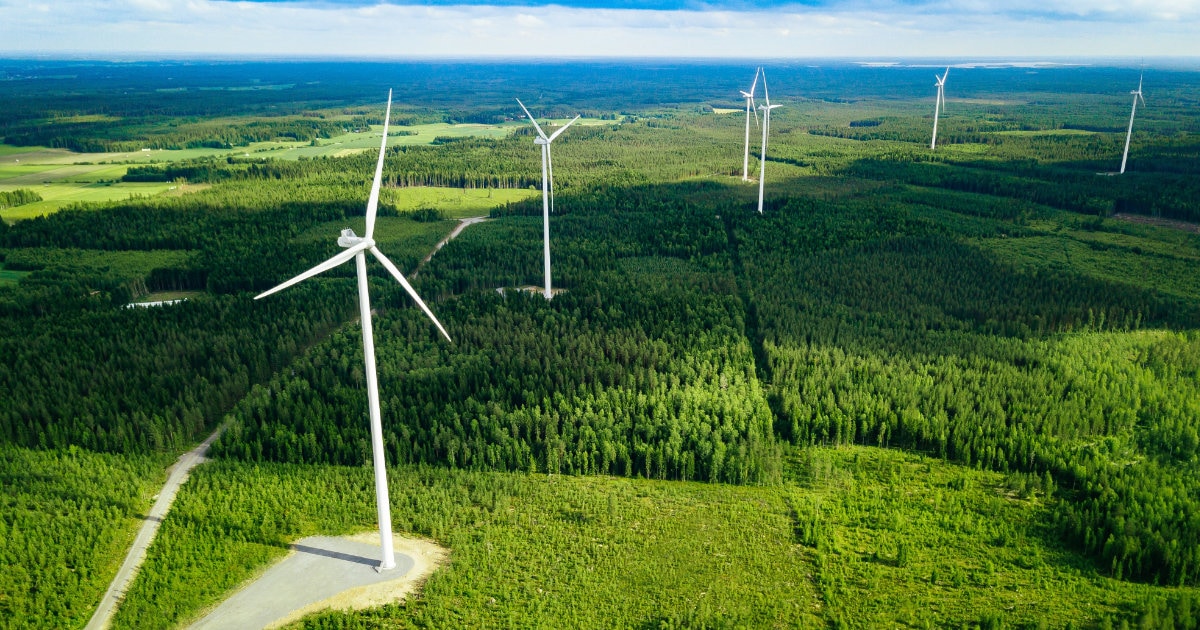
Converting wind into electricity involves several steps. First, the rotor blades capture the wind’s kinetic energy and start rotating. This rotation drives the low-speed shaft connected to a gearbox, which increases the rotation speed for the high-speed shaft. The high-speed shaft drives the generator, which converts the mechanical energy into electrical energy.
Many factors can influence wind power generation, including wind speed, air density, and the design of the turbine. For instance, the energy captured by the wind turbine increases cubically with the wind speed, meaning even small changes in wind speed can significantly impact the power generated.
Advantages and Disadvantages of Wind Power
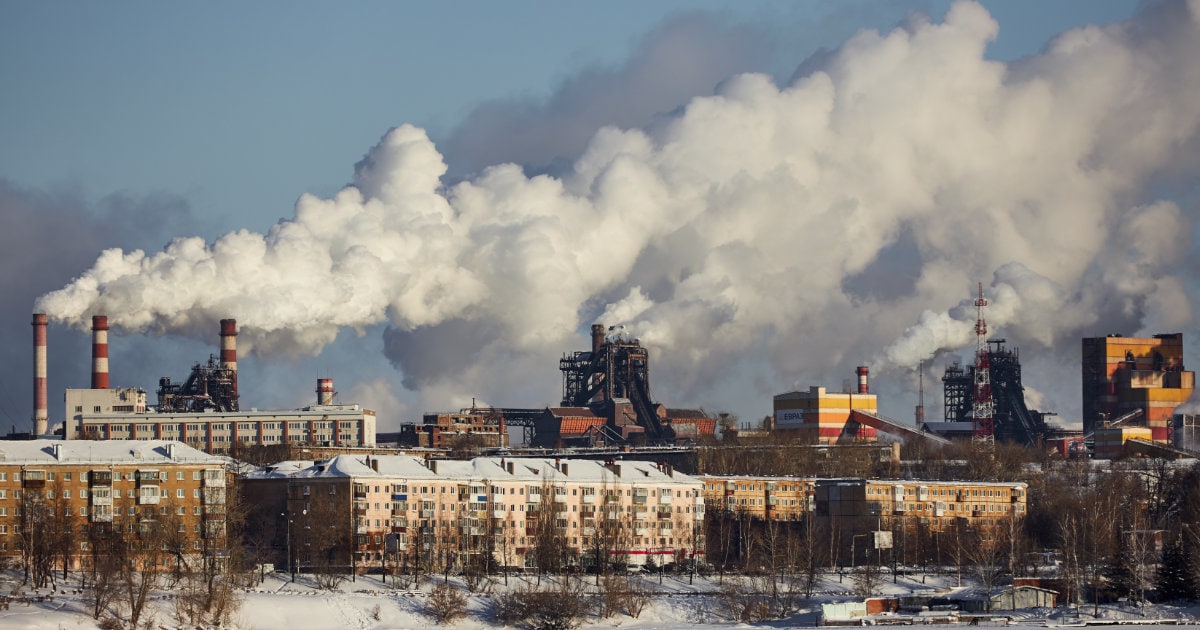
Wind power offers several compelling advantages. It’s a clean, renewable energy source, reducing our dependence on fossil fuels and contributing significantly to the reduction of harmful greenhouse gas emissions. It also stimulates economic growth by creating jobs in manufacturing, installation, and servicing of wind turbines.
However, wind power is not without its drawbacks. Wind is intermittent, and producing power depends on whether the wind is blowing, which isn’t always when electricity is needed. Wind turbines can also impact local wildlife, particularly birds and bats, and can be considered visual and noise pollution by some people.
Wind Power Efficiency
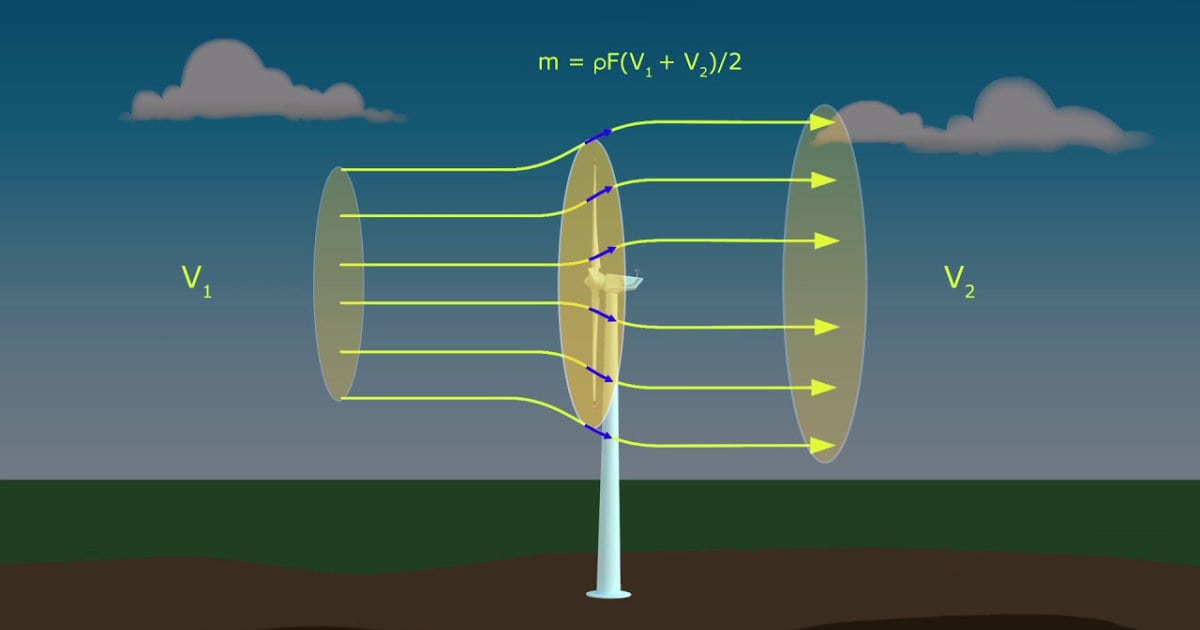
The amount of power a wind turbine can produce is determined by various factors, including the wind speed, the air density, and the turbine design.
The capacity factor, or the ratio of the actual energy produced over a period to the hypothetical maximum possible, is a crucial indicator of a wind turbine’s efficiency. Wind turbines typically have a capacity factor of 20-40%, meaning they don’t usually operate at their maximum output.
There is also a theoretical limit, known as the Betz limit, to how much of the wind’s power a wind turbine can capture, which is 59.3%.
Cost of Wind Power
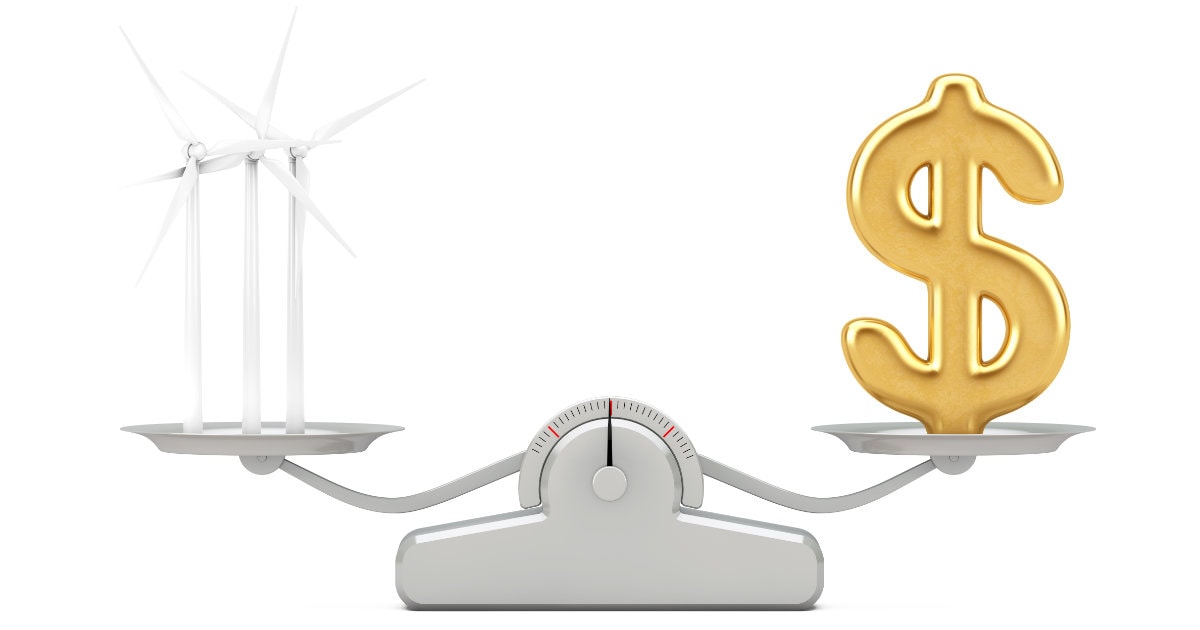
Wind power’s costs can be broken down into installation and operational costs. The former includes the cost of the turbine, transportation, site preparation, assembly, and installation. Operational costs involve maintenance and repair, insurance, and sometimes, land rental fees.
Environmental Impact of Wind Power
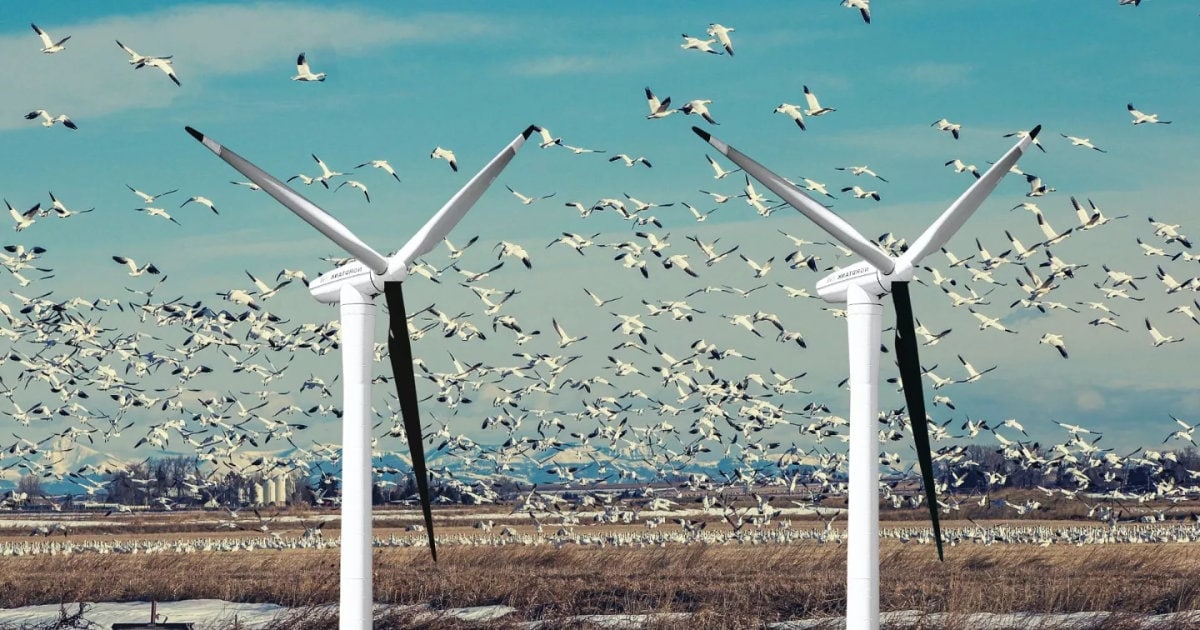
Wind power, a green energy source, has significantly less environmental impact compared with fossil fuels. It doesn’t produce harmful emissions and reduces our carbon footprint.
However, there are some environmental concerns associated with wind turbines. They can cause bird and bat mortality, and there are concerns related to noise and visual impact. But it’s worth noting that these impacts are often local and far less damaging than the effects of non-renewable energy sources.
Wind Power and the Grid

The integration of wind power into the existing grid presents some challenges. Wind power is variable, and its availability doesn’t always match demand, which can pose issues for grid stability.
Despite these challenges, many solutions exist, such as energy storage solutions (battery storage, pumped storage), which store excess energy produced for use during periods of low wind. Moreover, advanced grid management techniques, such as demand response, can help manage the variability of wind power.
Future of Wind Power

The future of wind power is promising, with many emerging technologies, like floating wind farms and airborne wind energy systems. Additionally, digitalization, including advanced analytics and smart grid technologies, is expected to improve operations, maintenance, and grid integration.
The future prospects for wind power are impressive. With the global push towards sustainable energy, the deployment of wind energy is likely to increase. This push, combined with technological advancements and a more accepting public perception, ensures that wind power will play a pivotal role in our energy future.
Frequently Asked Questions About Wind Power
The amount of electricity a wind turbine can generate depends on several factors including its size, efficiency, and the wind speed. For instance, a typical onshore wind turbine with a capacity of 2.5 to 3 MW can produce more than 6 million kWh in a year — enough to supply about 1,500 average households with electricity. However, this is a rough estimate as actual output will depend on the specific conditions at each wind site.
The cost of wind power has significantly decreased over the years, making it one of the cheapest sources of electricity in many parts of the world. The cost of wind energy varies depending on the wind resource and the specifics of the project, but on average, it can range from 2 to 6 cents per kilowatt-hour. Furthermore, it’s important to note that wind power does not require fuel and has low operational costs, making it economically competitive with traditional power sources.
Wind power has a significantly lower environmental impact compared to fossil fuel-based energy sources. It generates electricity without producing harmful emissions, thereby reducing our carbon footprint. However, there are some environmental concerns associated with wind turbines, including potential impacts on local wildlife, particularly birds and bats, as well as noise and visual impact. But these impacts are often local and less damaging than the effects of non-renewable energy sources.
The future of wind power looks promising with advancements in technology and increasing global commitment to renewable energy. Emerging trends include larger, more efficient turbines, offshore wind development, and floating wind farms. Moreover, wind energy’s potential far exceeds current electricity consumption, and its development will likely be driven by policy, economic, and social factors, alongside technological progress.
Wind Power In The News
DTEK’s Ukraine Wind Farm: Green Rebuilding Post-Russian Attacks
Siemens Gamesa’s New US-Specific Onshore Wind Turbine: An Exclusive Design
Sources
American Clean Power Association: Website
DOE Wind Energy Technologies Office: Website
International Energy Agency: Website
International Renewable Energy Agency: Website
National Renewable Energy Laboratory: Website

